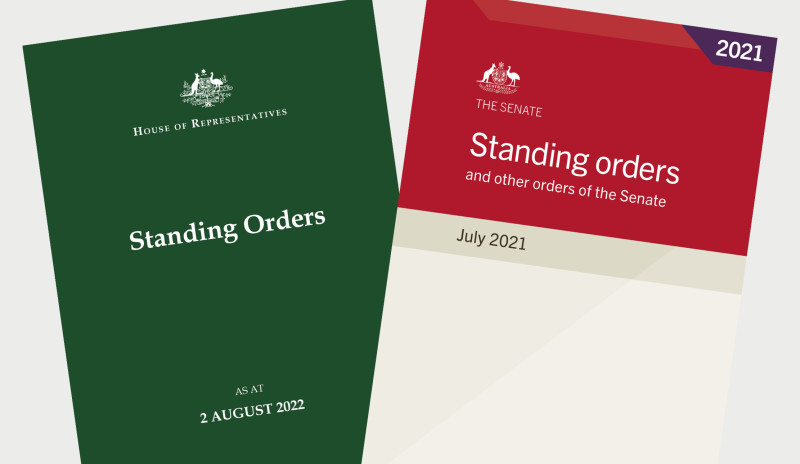What are the similarities and differences between the Senate and the House of Representatives?
Good question Gabby!
There are many similarities between the Senate and House of Representatives:
- Both are made up of elected representatives of the Australian people.
- Bills – ideas for new laws – are debated and voted on in the Senate and House.
- They both scrutinise – closely examine – the government to keep it accountable.
- Both have a large chair in the centre for the Presiding Officer (the President of the Senate and the Speaker of the House of Representatives.)
- The seating in both rooms is arranged in a U-shape.
- Both have Clerks who help run the proceedings and Hansard reporters who record what’s said.
- Both rooms have spaces for the press, the public, and equipment to broadcast the debates.
Some of the differences are:
- The Senate is red, and the House is green.
- The Senate has 76 senators who represent their state or territory. The House has 150 members who each represent an electorate.
- Government is formed in the House of Representatives. By tradition, the Prime Minister and the Treasurer are members of the House. The Prime Minister leads the government and the Treasurer sits in the House of Representatives as appropriation bills – proposed laws to spend money – can only originate in the House.
- Each has a different symbol. In the Senate, it is the Black Rod. In the House of Representatives it is the Mace.
- State senators are elected for 6-year terms. Members of the House are elected for 3-year terms. (Territory senators also have 3-year terms).
- Each has different standing orders – rules.

Standing orders of the Senate and the House of Representatives
Parliamentary Education Office (peo.gov.au)
Standing orders of the Senate and the House of Representatives

Parliamentary Education Office (peo.gov.au)
Description
This image shows the front covers of the Standing Orders of the Senate and the Standing Orders of the House of Representatives. Standing orders are the rules about how the Senate and House run their meetings.
This work is licensed under a Creative Commons Attribution-NonCommercial-NoDerivs 3.0 Unported License.
You are free to share – to copy, distribute and transmit the work.
Attribution – you must attribute the work in the manner specified by the author or licensor (but not in any way that suggests that they endorse you or your use of the work).
Non-commercial – you may not use this work for commercial purposes.
No derivative works – you may not alter, transform, or build upon this work.
Waiver – any of the above conditions can be waived if you get permission from the copyright holder.
